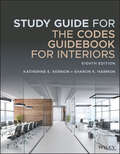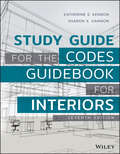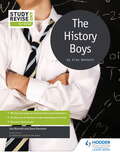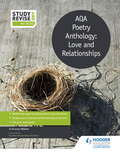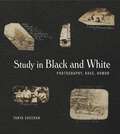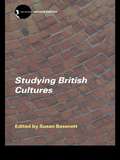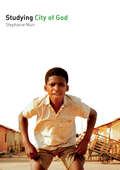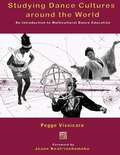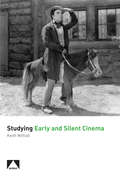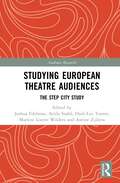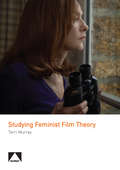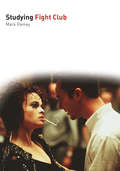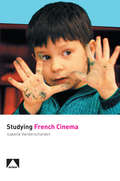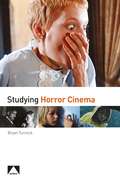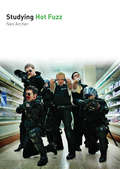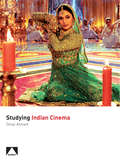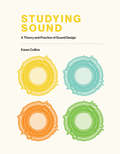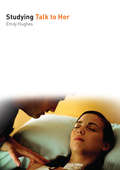- Table View
- List View
Study Guide for The Codes Guidebook for Interiors
by Katherine E. Kennon Sharon K. HarmonSTUDY GUIDE FOR THE CODES GUIDEBOOK FOR INTERIORS The comprehensive study guide for understanding interior codes This revised and updated eighth edition of the Study Guide for the Codes Guidebook for Interiors is an essential companion to The Codes Guidebook for Interiors, the industry’s reference of choice. It offers complete coverage of the major codes and standards that apply to interior projects. This Study Guide includes lists of terms, practice questions, practical application exercises, code tables, and checklists. This companion study guide is a comprehensive measure of a designer’s understanding and application of codes for interior projects. It can help design students learn and practitioners keep their skills up to date and prepare for the NCIDQ and ARE exams. It is vital that designers and architects have an up-to-date working knowledge of the various codes involved with building interiors, whether during renovation or new construction, and this study guide offers the opportunity to: Study with many new questions, in both the short answer and application sections Review the key terms of the industry Use the practice questions and exercises to test working knowledge of codes Utilize the code tables during the design process Employ the numerous checklists on proposed and real life projects to ensure complete compliance The revised Study Guide is a useful companion to The Codes Guidebook for Interiors, the essential reference for all interior professionals. For the designer, architect, or student, the Study Guide for The Codes Guidebook for Interiors is a must-have resource.
Study Guide for The Codes Guidebook for Interiors: Wiley E-text Folder And Interactive Resource Center Access Card
by Katherine E. Kennon Sharon K. HarmonThe comprehensive study guide for understanding interior codes This revised and updated seventh edition of the Study Guide for the Codes Guidebook for Interiors is an essential companion to The Codes Guidebook for Interiors, the industry's reference of choice, with complete coverage of the major codes and standards that apply to interior projects. This Study Guide includes term lists, practice questions, practical application exercises, code tables, checklists, and a book companion site featuring interactive checklists, helping designers and architects check their knowledge and comprehension from reading The Codes Guidebook for Interior chapters and prepare for the NCIDQ and ARE exams. Since The Codes Guidebook for Interiors text covers the latest requirements, standards, terminology, and federal regulations, including the 2015 ICC, the current ADA standards, and ICC/ANSI requirements as well as information on green construction, this companion study guide is a comprehensive measure of designers understanding and application of codes for interior projects. It can help design students learn and practitioners keep their skills up to date. Because it is vital that designers and architects have an up-to-date working knowledge of the various codes involved with building interiors, whether during renovation or new construction, the study guide offers them an opportunity to: Check their knowledge of the key terms of the industry Test their working knowledge of codes using the practice questions and problem scenarios Utilize the code tables during the design process Employ the numerous checklists on proposed and real life projects to ensure complete compliance The revised Study Guide is a useful companion to The Codes Guidebook for Interiors, the essential reference for all interior professionals. Check your understanding of the individual chapters as exam prep or even just as a self-test. For the designer, architect, or student, the Study Guide for The Codes Guidebook for Interiors is a must-have resource.
Study and Revise for GCSE: The History Boys
by Sue Bennett Dave StockwinExam Board: AQA, WJEC, WJEC EduqasLevel: GCSE (9-1)Subject: English literatureFirst teaching: September 2015First exams: Summer 2017Enable students to achieve their best grade in GCSE English Literature with this year-round course companion; designed to instil in-depth textual understanding as students read, analyse and revise The History Boys throughout the course.This Study and Revise guide:- Increases students' knowledge of The History Boys as they progress through the detailed commentary and contextual information written by experienced teachers and examiners- Develops understanding of plot, characterisation, themes and language, equipping students with a rich bank of textual examples to enhance their exam responses- Builds critical and analytical skills through challenging, thought-provoking questions that encourage students to form their own personal responses to the text- Helps students maximise their exam potential using clear explanations of the Assessment Objectives, annotated sample student answers and tips for reaching the next grade- Improves students' extended writing techniques through targeted advice on planning and structuring a successful essay- Provides opportunities for students to review their learning and identify their revision needs with knowledge-based questions at the end of each chapter
Study and Revise: Aqa Poetry Anthology : Love And Relationships
by Jo Gracey-WalkerExam Board: AQALevel: GCSE (9-1)Subject: English literatureFirst teaching: September 2015First exams: Summer 2017Enable students to achieve their best grade in GCSE English Literature with this year-round course companion; designed to instil in-depth textual understanding as students read, analyse and revise the AQA Poetry Anthology: Love and Relationships throughout the course.This Study and Revise guide:- Increases students' knowledge of the AQA Poetry Anthology: Love and Relationships as they progress through the detailed commentary and contextual information written by experienced teachers and examiners- Develops understanding of plot, characterisation, themes and language, equipping students with a rich bank of textual examples to enhance their exam responses- Builds critical and analytical skills through challenging, thought-provoking questions that encourage students to form their own personal responses to the text- Helps students maximise their exam potential using clear explanations of the Assessment Objectives, annotated sample student answers and tips for reaching the next grade- Improves students' extended writing techniques through targeted advice on planning and structuring a successful essay- Provides opportunities for students to review their learning and identify their revision needs with knowledge-based questions at the end of each chapter
Study in Black and White: Photography, Race, Humor
by Tanya SheehanIn this volume, Tanya Sheehan takes humor seriously in order to trace how photographic comedy was used in America and transnationally to express evolving ideas about race, black emancipation, and civil rights in the mid-1800s and into the twentieth century.Sheehan employs a trove of understudied materials to write a new history of photography, one that encompasses the rise of the commercial portrait studio in the 1840s, the popularization of amateur photography around 1900, and the mass circulation of postcards and other photographic ephemera in the twentieth century. She examines the racial politics that shaped some of the most essential elements of the medium, from the negative-positive process to the convention of the photographic smile. The book also places historical discourses in relation to contemporary art that critiques racism through humor, including the work of Genevieve Grieves, Adrian Piper, Lorna Simpson, Kara Walker, and Fred Wilson. By treating racial humor about and within the photographic medium as complex social commentary, rather than a collectible curiosity, Study in Black and White enriches our understanding of photography in popular culture. Transhistorical and interdisciplinary, this book will be of vital interest to scholars of art history and visual studies, critical race studies, U.S. history, and African American studies.
Study in Black and White: Photography, Race, Humor
by Tanya SheehanIn this volume, Tanya Sheehan takes humor seriously in order to trace how photographic comedy was used in America and transnationally to express evolving ideas about race, black emancipation, and civil rights in the mid-1800s and into the twentieth century.Sheehan employs a trove of understudied materials to write a new history of photography, one that encompasses the rise of the commercial portrait studio in the 1840s, the popularization of amateur photography around 1900, and the mass circulation of postcards and other photographic ephemera in the twentieth century. She examines the racial politics that shaped some of the most essential elements of the medium, from the negative-positive process to the convention of the photographic smile. The book also places historical discourses in relation to contemporary art that critiques racism through humor, including the work of Genevieve Grieves, Adrian Piper, Lorna Simpson, Kara Walker, and Fred Wilson. By treating racial humor about and within the photographic medium as complex social commentary, rather than a collectible curiosity, Study in Black and White enriches our understanding of photography in popular culture. Transhistorical and interdisciplinary, this book will be of vital interest to scholars of art history and visual studies, critical race studies, U.S. history, and African American studies.
Studying British Cultures: An Introduction
by Susan Bassnett'British Studies' and 'British Cultural Studies' cover a wide range of facets of contemporary Britain. Studying British Cultures: An Introduction is a unique collection of essays which examine the most significant aspects of this quickly developing area of study, analyzing the ways of teaching and reading British culture.The work covers the contemporary and key issues, including: the terminological distinction between 'British Studies' and 'British Cultural Studies' the problem of national cultures and identities in contemporary Britain studying language and literature from a British Studies perspective models for studying the historical context of the development of ideas of `Britishness' studying contemporary Britain overseas The contributors are some of the key names in current debates surrounding British Studies, and Susan Bassnett holds together their work with a substantial and accessible introduction. Studying British Cultures: An Introduction will be essential reading for students and teachers concerned with the study of contemporary Britain.
Studying City of God
by Stephanie MuirA leading example of a resurgent Latin American cinema - 'la buena onda' - in the early twenty-first century, City of God was a huge international popular and critical success. A combination of intoxicating, Hollywood-style genre film-making and hard-hitting, social-realist subject matter, it was hailed as a masterpiece at Cannes in 2002 and seen by over 3 million people in Brazil, including the Brazilian cabinet.In Studying City of God, Stephanie Muir considers the historical and industrial context of City of God - a brief history of Latin American cinema is followed by a more detailed account of film-making in Brazil - from light-hearted travelogues to Cinema Novo and after - all in the context of increasing globalisation. She analyzes narrative and genre - how the film uses the components of narrative in a complex way, experimentally manipulating time while using traditional genre conventions that are highly recognisable to mainstream audiences. The formal elements of the film are dissected through a detailed illustrated analysis of the kinetic, scene setting opening sequence. She also discusses audience responses - from establishment critical reaction to fan-based Internet sites and student feedback - and issues of representation and ideology - just how 'authentic' can a film such as City of God hope to be? Does its style overwhelm its subject matter?
Studying City of God (Studying Films)
by Stephanie MuirA leading example of a resurgent Latin American cinema – 'la buena onda' – in the early twenty-first century, City of God was a huge international popular and critical success. A combination of intoxicating, Hollywood-style genre film-making and hard-hitting, social-realist subject matter, it was hailed as a masterpiece at Cannes in 2002 and seen by over 3 million people in Brazil, including the Brazilian cabinet.In Studying City of God, Stephanie Muir considers the historical and industrial context of City of God – a brief history of Latin American cinema is followed by a more detailed account of film-making in Brazil – from light-hearted travelogues to Cinema Novo and after – all in the context of increasing globalization. She analyzes narrative and genre – how the film uses the components of narrative in a complex way, experimentally manipulating time while using traditional genre conventions that are highly recognizable to mainstream audiences. The formal elements of the film are dissected through a detailed illustrated analysis of the kinetic, scene setting opening sequence. She also discusses audience responses – from establishment critical reaction to fan-based Internet sites and student feedback – and issues of representation and ideology – just how 'authentic' can a film such as City of God hope to be? Does its style overwhelm its subject matter?
Studying Dance Cultures Around The World: An Introduction To Multicultural Dance Education
by Pegge VissicaroAn introductory textbook for college and university students in dance appreciation and humanities-based courses. This book facilitates the critical examinations of dance in its varied contexts around the world. The objective is to provide a holistic approach that addresses key topics for learning about dance cultures, situated within a broad theoretical framework.
Studying Early and Silent Cinema
by Keith WithallA comprehensive chronology of the period until the birth of sound and also a series of detailed case studies on the key films from the period
Studying Early and Silent Cinema
by Keith WithallA comprehensive chronology of the period until the birth of sound and also a series of detailed case studies on the key films from the period
Studying Early and Silent Cinema
by Keith WithallIn this accessible introduction to early and silent cinema, which is currently enjoying a renaissance, both academically and in the popular imagination thanks to The Artist, Keith Withall provides both a comprehensive chronology of the period until the birth of sound and also a series of detailed case studies on the key films from the period – some well known (including Griffith's The Birth of a Nation, Eisenstein's Strike and Chaplin's The Kid), some perhaps less well familiar (including Murnau's The Last Laugh and Oscar Micheaux's Within Our Gates). As well as covering in detail the major film-making figures and nations of the period, the author also provides insights into the industry in less well documented areas. Throughout, the films and film-makers are placed in the context of rapid worldwide industrial change. (Please note this book is a revised and expanded version of Early and Silent Cinema: A Teacher's Guide, published by Auteur in 2007.)
Studying European Theatre Audiences: The STEP City Study (Audience Research)
by Joshua Edelman Attila Szabó Hedi-Liis Toome Marline Lisette Wilders Antine ZijlstraThis book reports on one of the largest co-ordinated efforts to survey the theatrical audience experience: the City Study of the Project on European Theatre Systems, which conducted over 7000 surveys and dozens of interviews and focus groups with audience members from four mid-sized cities across Europe.This study aimed to capture the details of how audiences perceive and value theatre, and resulted in a data set which, while imperfect, has no precedent in scale and comparability for theatre studies. Based on this very large data set, the authors were able to create a portrait of varied segments of European theatrical audiences, its experiences, and how it values theatre, that is more detailed and incisive than any previously available. The question is not just who comes to theatre, but why, and how those experiences are valuable to them. This book’s key contribution, however, is methodological that offers a detailed and unsparing examination of the City Study’s working methods: their underlying theory, their strengths and weaknesses, and which survey and interview techniques were more successful in bringing out useful information.This makes this book essential reading for those interested in studying theatre’s place in society, but also for artists, policy makers, and arts professionals who want to make and share work with an understanding of their audience’s engagement with it.
Studying Feminist Film Theory (Auteur)
by Terri MurrayThis book is aimed at helping media and film studies teachers introduce the basics of feminist film theory. No prior knowledge of feminist theory is required, the intended readers being university undergraduate teachers and students of film and media studies. Areas of emphasis include spectatorship, narrative, and ideology. Many illustrative case studies from popular cinema are used to offer students an opportunity to consider the connotations of visual and aural elements of film, narrative conflicts and oppositions, the implications of spectator “positioning” and viewer identification, and an ideological critical approach to film. Explanations of key terminology are included, along with classroom exercises and practice questions. Each chapter begins with key definitions and explanations of the concepts to be studied, including some historical background where relevant. Case studies include film noir, Kathryn Bigelow’s Strange Days and the work of directors Spike Lee, Claire Denis, and Paul Verhoeven.Studying Feminist Film Theory is a revised and expanded version of Feminist Film Studies: A Teacher’s Guide, published by Auteur in 2007.
Studying Fight Club
by Mark RameyA thoughtful and provocative but also accessible analysis of a pop-culture phenomenon and a deeply philosophical and satirical exploration of modern life.
Studying Fight Club
by Mark RameyA thoughtful and provocative but also accessible analysis of a pop-culture phenomenon and a deeply philosophical and satirical exploration of modern life.
Studying Fight Club (Studying Films Ser.)
by Mark RameyFight Club is, on one level, pop-culture phenomena and on another, a deeply philosophical and satirical exploration of modern life. David Fincher’s 1999 film (and Chuck Palahniuk’s source novel) has had a huge impact on audiences worldwide leading to spoofs, homage, merchandising and numerous Internet fan sites. On initial release the film was met with wide hostility from critics who either failed to appreciate its satirical intent or believed the film failed to deliver on its satirical promise. Early in its DVD afterlife, however, a wider audience began to appreciate the film’s significance and radical message. Although attracted by the film’s playfulness and star wattage, however, many students struggle with its theoretical notions such as Capitalism, materialism, anarchy and so on. This is one film, which therefore merits a thoughtful and provocative analysis but also an accessible one, and Mark Ramey has provided just that.
Studying French Cinema
by Isabelle VanderscheldenAdopting a textual approach, with an emphasis on recent popular films, Studying French Cinema is geared toward nonspecialists studying French and film studies, as well as the general reader who might be interested in postwar French cinema. Each chapter focuses on one or more key films, from the groundbreaking output of the Nouvelle Vague ( Les 400 coups, 1959) to contemporary documentaries ( Etre et avoir, 2002) and situates these works within explorations of childhood, adolescence, and coming of age; auteur ideology and individual style; the representation of recent French history; aesthetic approaches; transnational production practices; and popular cinema, comedy, and gender issues. Taken together, this history provides a fresh perspective on postwar French history and points readers toward further study of related films.
Studying French Cinema (Auteur Ser.)
by Isabelle VanderscheldenTaking a text-led approach, with the emphasis on more recent popular films, Studying French Cinema is directed at non-specialists such as students of French, Film Studies, and the general reader with an interest in post-war French cinema. Each of the chapters focuses on one or more key films from the ground-breaking films of the nouvelle vague (Les 400 coups, 1959) to contemporary documentary (Etre et avoir, 2002) and puts them into their relevant contexts. Depending on the individual film, these include explorations of childhood, adolescence and coming of age (Les 400 coups, L'Argent de poche); auteur ideology and individual style (the films of Jean-Luc Godard and Agnes Varda); the representation of recent French history (Lacombe Lucien and Au revoir les enfants); transnational production practices (Le Pacte des loups); and popular cinema, comedy and gender issues (e.g. Le Diner de cons). Each film is embedded in its cultural and political context. Together, the historical discussions provide an overview of post-war French history to the present. Useful suggestions are made as to studies of related films, both those discussed within the book and outside.
Studying Horror Cinema
by Bryan TurnockAimed at teachers and students new to the subject, Studying Horror Cinema is a comprehensive survey of the genre from silent cinema to its twenty-first century resurgence. Structured as a series of thirteen case studies of easily accessible films, it covers the historical, production, and cultural context of each film, together with detailed textual analysis of key sequences. Sitting alongside such acknowledged classics as Psycho and Rosemary’s Baby are analyses of influential non-English language films as Kwaidan, Bay of Blood, and Let the Right One In. The author concludes with a chapter on 2017’s blockbuster It, the most financially successful horror film of all time, making Studying Horror Cinema the most up-to-date overview of the genre available.
Studying Hot Fuzz (Studying Films)
by Neil ArcherBy the power of Greyskull! In their second big-screen collaboration after Shaun of the Dead (2004), with Hot Fuzz (2007) director and co-writer Edgar Wright and co-writer and star Simon Pegg took aim at the conventions of the Hollywood action movie, transplanting gratuitous slo-mo action sequences into the English village supermarket and local pub. In this first critical study of arguably the most influential British film-makers to emerge this century, Neil Archer considers to what extent a modestly funded film such as this can be considered 'British' at all, given its international success and distribution by an American studio, and how far that success depends upon what he calls its 'cultural specificity'. He considers the film as a parody of the action movie genre, and discusses exactly how parody works – not just in relation to the conventions of the action film but also in the depiction of English space. Exactly what and who is Hot Fuzz poking fun at?
Studying Indian Cinema (Auteur)
by Omar AhmedThis book traces the historical evolution of Indian cinema through a number of key decades. The book is made up of 14 chapters with each chapter focusing on one key film, the chosen films analysed in their wider social, political and historical context whilst a concerted engagement with various ideological strands that underpin each film is also evident. In addition to exploring the films in their wider contexts, the author analyses selected sequences through the conceptual framework common to both film and media studies. This includes a consideration of narrative, genre, representation, audience and mise-en-scene. The case studies run chronologically from Awaara (The Vagabond, 1951) to The Elements Trilogy: Water (2005) and include films by such key figures as Satyajit Ray (The Lonely Wife), Ritwick Ghatak (Cloud Capped Star), Yash Chopra (The Wall) and Mira Nair (Salaam Bombay!).
Studying Sound: A Theory and Practice of Sound Design
by Karen CollinsAn introduction to the concepts and principles of sound design practice, with more than 175 exercises that teach readers to put theory into practice.This book offers an introduction to the principles and concepts of sound design practice, from technical aspects of sound effects to the creative use of sound in storytelling. Most books on sound design focus on sound for the moving image. Studying Sound is unique in its exploration of sound on its own as a medium and rhetorical device. It includes more than 175 exercises that enable readers to put theory into practice as they progress through the chapters.
Studying Talk to Her
by Emily HughesTalk to Her (2002) is a hugely rich and interesting, but ambiguous, film which met with both popular success and critical acclaim. The film won the 2003 Oscar for best original screenplay and has been hailed by some critics as Pedro Almodóvar's masterpiece. But like most of Almodóvar's films, little is clear cut; the characters are complex and our affinity and empathy for them shifts throughout the film. In Studying Talk to Her, Emily Hughes provides an in-depth analysis of both the formal elements of the film (narrative, genre, auteur study) and the themes and issues that arise, including the social context of modern Spain and the old traditional iconography, the shifting attitudes towards gender, and, crucially, the uneasy, morally ambiguous depiction of rape and the spectator's reaction to it.
